Buying a new smartphone is a positive experience unless you’re purchasing one because your previous one got damaged unexpectedly. The most common way phones get damaged is by dropping them. While most of their components remain functional, the glass screen shatters, which makes one wonder why the material is even used in making screens. Why are phone screens made of glass?
Phone screens are made of glass because it is cheaper than it’s alternatives. The only option cheaper than glass is plastic, which doesn’t shatter but incurs more scratches. Since a phone is kept with keys and coins more often than it falls screen-down, glass is the more reasonable choice.
In this article, you will learn more about each of the ten reasons that make glass the better option for phone screens. You will also discover why phone screens are fragile and what other options can be used to craft a screen. But before that, let’s briefly go over the 10 reasons we will discuss later.
- Glass doesn’t scratch as easily as polycarbonate.
- Screens made of glass are clearer.
- Glass screens also have plastic.
- Mobile screens made from glass are cheaper than high-quality alternatives
- Fragile glass screens help smartphone manufacturers get more sales
- Phone screens made of glass are environment-friendly
- Glass can be sourced more easily than plastic
- Plastic screens look cheap
- Glass touchscreens work better
- Being scratch-proof is more important than being shatter-proof
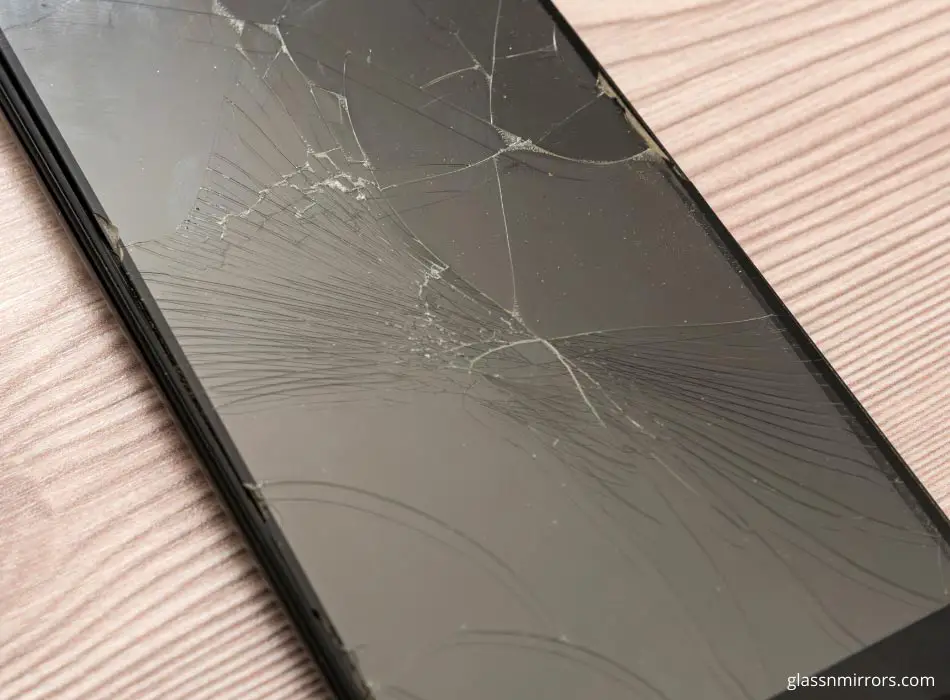
Table of Contents
- 1 Why Are Phone Screens So Fragile?
- 2 Could Phone Screens Be Made Of Other Materials?
- 3 Which Phones Have Glass Screens?
- 4 1. Glass is More Scratch-resistant Than Polycarbonate
- 5 2. Glass Isn’t As Photosensitive As Its Alternatives
- 6 3. There Is A Plastic Element To Glass Screens
- 7 4. Glass Is More Feasible
- 8 5. Glass Incentivizes Upgrades
- 9 6. Glass Is Environmentally Friendly
- 10 7. Glass Is More Readily Available
- 11 8. Plastic Looks Cheap
- 12 9. Glass Has A Better Dielectric Constant
- 13 10. Glass Shatters But Plastic Scratches
- 14 Final Thoughts – Why Are Phone Screens Made Of Glass?
- 15 Hot Glass vs Cold Glass – What’s The Difference?
- 16 Can Quartz Be Made Into Glass? Guide On Quartz & Glass
- 17 What Is Panda Glass | Ultimate Guide To Panda Glass
Why Are Phone Screens So Fragile?
Now that you know some of the reasons why glass is the material of choice for phone manufacturers, you might wonder why stronger glass isn’t used for phone screens. Not all glass is made alike, after all, and some tempered varieties are more durable. So, why isn’t your phone more shatter-proof?
Phone screens are so fragile because for a phone to be functional and light, the screen needs to be slim. As a result, the integrity of the glass is compromised as wider sheets with lower depth are used to facilitate better touch sensitivity and visibility. You should use a protective case.
Since protective cases are easier to use than having a protector-free phone with a thicker glass screen, making thinner screens is seen as the more practical option. Consumers are meant to keep their phones’ glass screens from receiving surface impact.
We all know how hard that can be!
Could Phone Screens Be Made Of Other Materials?
A phone screen can be made of other materials like plastic, aluminum, and any transparent material with an appropriate dielectric constant. However, these materials are not feasible or practical for worldwide smartphone adoption.
I think as technology improves, we may see some changes in how smartphones are made. Gorilla glass could be the next big thing.
Which Phones Have Glass Screens?
All smartphones and touchscreen phones have glass screens. The top layer of these screens features hard glass or gorilla glass, which is tempered to withstand scratches.
However, regardless of the glass’s strength, it can shatter if the phone falls screen-first from a height of over a meter.
With the surface-level questions cleared, let’s dive deeper into the 10 reasons why phone screens are made of glass.
1. Glass is More Scratch-resistant Than Polycarbonate
One of the glass alternatives often suggested by concerned consumers is polycarbonate. It is less brittle than glass and hence unlikely to break the way glass screens do. It is also not as expensive as other options and can sometimes be acquired much cheaper than glass, though that depends on where the manufacturing plant is located.
It is technically possible to have a fully functional smartphone with a polycarbonate touchscreen. You can have your phone customized to feature a polycarbonate screen, but the process will cost more than purchasing two new smartphones of the equivalent model. This isn’t because the material is expensive but because of economies of scale.
Did you know why Chemistry beakers are made from glass? Read my article here.
The economies of scale concept can be simplified as follows: bulk production results in cheaper units. Since polycarbonate screens aren’t usually manufactured to fit smartphones, a single unit would need to be made for your phone specifically. This type of bespoke production would cost more. This brings us back to the question of scale?
Why are polycarbonate screens not produced on a larger scale? Most producers argue that polycarbonate scratches more easily than glass. The brittleness of your glass screen is a liability when the phone falls, but as long as the phone’s in your pocket alongside coins and keys, the brittleness is a useful trait as it guards against scratching.
Did you know that Apple products
use Samsung components?
See proof of this here.
2. Glass Isn’t As Photosensitive As Its Alternatives
This reason applies to polycarbonate (discussed earlier) and plastics in general. If you have a transparent plastic slide at home, you’ll recognize that after a while, it starts becoming yellow. In case you’ve never had aged transparency decks at home, you can test plastic’s photosensitivity with the following experiment.
Buy a plastic screen protector and keep it on a window sill for a week. You’ll notice that the plastic screen gets cloudy. It might seem like there’s fog on the screen or oil smudges that can be wiped away. In reality, the sheet has lost its clarity due to UV exposure.
Ultraviolet rays are present in the sunlight as well as indoor lighting. But even if you were to keep your phone out of the sun and use it with the lights shut, the plastic screen would get clouded because UV rays are also present in the backlight of your phone.
Unless you use a kindle-type e-ink screen that isn’t backlit, glass is the clearest choice that stays clear the longest. Polycarbonate, general plastics, and other suggested alternatives are all prone to losing clarity with heavy UV ray exposure.
3. There Is A Plastic Element To Glass Screens
One of the arguments made in favor of plastic is that it doesn’t shatter when it falls. Little do plastic advocates know that even glass screens have a thin layer of plastic that holds the screen together when it cracks. If modern smartphone screens use glass while extracting the strength benefit from plastic, there’s nothing more than plastic can add that would justify getting rid of glass.
Plastic’s technical advantage is that it doesn’t break when fallen, so switching away from glass might keep the screen from getting a dozen cracks, but the screen would be riddled with vision-interrupting scratches with standard use. In other words, using more plastic than is already used in smartphones would add liability without adding further advantages.
4. Glass Is More Feasible
One of the liabilities of non-plastic alternatives is that they’re very expensive. Given that glass shatters upon falling and plastic yellows over time and scratches easily, the best choice for screen manufacturing seems to be transparent aluminum. It is harder to scratch, doesn’t get cloudy with UV exposure, and is less likely to shatter.
But the problem with aluminum isn’t as technical as it is business-oriented. A transparent aluminum screen is more expensive to manufacture and market than a glass screen. This stands true for all non-plastic, glass-free screen options.
Ultimately, the smartphone manufacturer isn’t thinking, “how can I make the most durable product?” He’s thinking, “how can I make the cheapest product that I can sell at a reasonable price-point?” And glass is the clear winner in that conversation.
5. Glass Incentivizes Upgrades
Continuing with the capitalism-related reasons your phone features glass screens, we must address the benefit of glass that might be a drawback to consumers. Yes, glass does shatter upon impact but is it really a disadvantage if it forces you to buy a new phone or get a replacement?
From the manufacturers’ point-of-view this is a feature, not a flaw. Making a product that would not require replacement would be akin to self-destruction in capitalism, especially when the global consumer base has already accepted the norm of constant upgrades.
This is not to say that evil phone makers are deliberately producing poorer quality products. There’s a nuanced conversation to be had. Would you like a more expensive phone that you don’t have to replace or a phone that you can upgrade every two years?
Don’t drop your phone into the water. People think the broken glass will float. Read my article explaining why it won’t.
On the surface, a long-lasting phone seems like the better option, but in reality, it is worth it to upgrade your phone as exponential advances in technology are unlocked each year. If you were the only one with an aluminum screen phone, in five years, your phone would look like the rotor-dial landline phone compared to your friends’ smartphones.
We don’t realize how much better phones get each year because we’re all upgrading our smartphones regularly. Glass screens reduce the acquisition cost, which makes these upgrades cheaper. An aluminum screen would make it more expensive to get a new phone though it would make the phone (or at least its screen) last longer. You’d still need to let the phone go because of how outdated its feature stack would be.
6. Glass Is Environmentally Friendly
Plastic is almost impossible to recycle well. If you look into how the plastic industry leverages propaganda to make it seem like recycling plastic is possible, you’ll be glad that phone screens aren’t made of plastic. While it is technically possible to recycle plastic, it is more expensive than manufacturing new plastic.
That’s why even plastic meant for recycling is often shipped away to other countries where American companies have plausible deniability in their lack of knowledge. There is no evidence that plastic is recycled on a large scale.
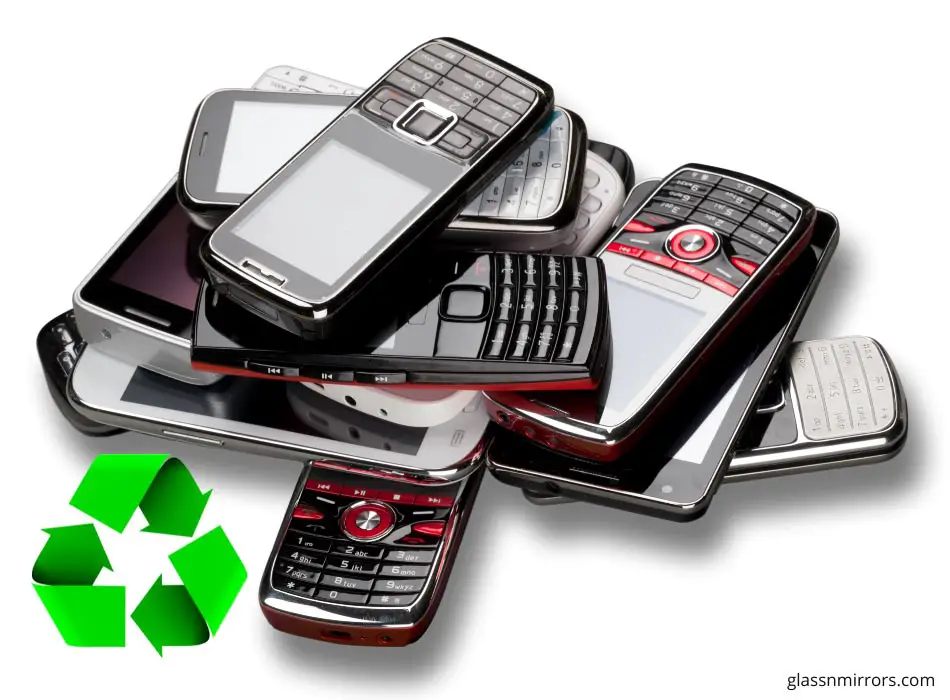
Compared to that, glass can be recycled, and almost all new glass production uses a portion of glass recycling in the manufacturing process. In the long run, it is cheaper to recycle glass than to make 100% new glass. With plastic, the case is the opposite.
You can technically make replaceable plastic screens that can be changed whenever a previous sheet gets cloudy due to UV exposure or incurs scratches because of regular use, but this would have an adverse environmental impact.
7. Glass Is More Readily Available
No matter what country you’re in, you’ll have access to glass utensils. In contrast, how many polycarbonate and transparent aluminum items have you come across? From this observation, one can deduce that glass is more widely available.
Since glass can be manufactured at a low cost almost anywhere, it is a better option for phone manufacturing conglomerates that want to diversify their supply chain. Your production plant doesn’t have to be located close to aluminum reserves if you opt for glass screens.
The ease with which glass can be sourced also allows certain manufacturers to standardize the production of screens. Do you know that Apple products use Samsung components? It is common in the smartphone production business to rely on one manufacturer for a specific component. Screens for multiple brands’ smartphones are made in a single destination.
Suppose manufacturer A produces screens for phone brands B, C, and D. If C wants to have aluminum screens, it has to start its own manufacturing operation since the original manufacturer cannot be bothered to switch production for one brand.
8. Plastic Looks Cheap
As mentioned above, the business of smartphones is less about making phones and more about marketing them. Phones often have similar features and consist of components that are built by the sole back-end manufacturer.
When it comes to marketing a phone, glass has an inherent advantage since it is shinier and has post-modern connotations. In contrast, plastic looks cheap. There’s little shine to plastic, and it is used so often in cheaper products that it is immediately associated with disposability.
9. Glass Has A Better Dielectric Constant
Despite the past few reasons, capitalism doesn’t account for all the reasons behind glass being the standard for screen manufacturing. There are some practical reasons for this, one of which is the dielectric constant of glass. Glass has a high dielectric constant which means it allows more electricity to pass through per unit of equivalent vacuum. In short, a higher dielectric constant makes for a better touchscreen experience.
10. Glass Shatters But Plastic Scratches
Finally, the option of glass over plastic for phone screens comes down to one thing: user experience. You may have dropped your phone on its face in the past, but if you compare it to how often you have kept your phone in the same pocket as your keys and coins, there’s no comparison.
Because users keep their phones in positions where they can get scratched more often than they drop their phones, manufacturers opt for a material that is harder to scratch despite being harder to shatter.
If a glass bottle shatters, some people think that a glass bottle can pop a tire. I have put this myth to bed in my article.
Final Thoughts – Why Are Phone Screens Made Of Glass?
Phones have glass screens simply because they are a little tougher less scratch-resistant than plastic plus they are cheaper to produce.
If you do not like glass screens, then you’ll spend a lot of money getting a bespoke non-glass screen. This will make your phone a liability since you’ll have to stick with it longer while your friends get new phones with upgraded capabilities.
It is better to get a protective case that keeps your screen from hitting the floor even if your phone falls.
-
Hot Glass vs Cold Glass – What’s The Difference?
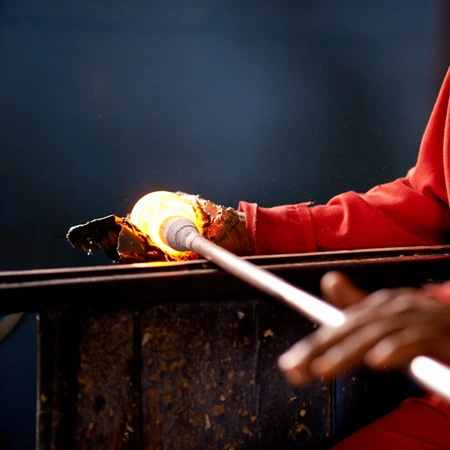
When most people think of glass, they probably think of windows or drinking glasses. But there is a lot more to glass than that. In fact, there are two main … Keep Reading
-
Can Quartz Be Made Into Glass? Guide On Quartz & Glass
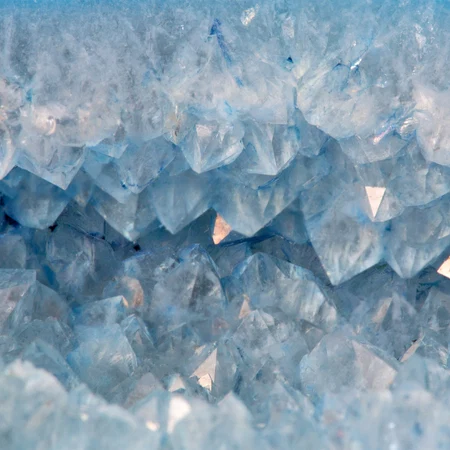
Glass making is a process that involves heating and cooling sand and other minerals. You may wonder whether it is possible to make glass out of quartz. Glass is made … Keep Reading
-
What Is Panda Glass | Ultimate Guide To Panda Glass
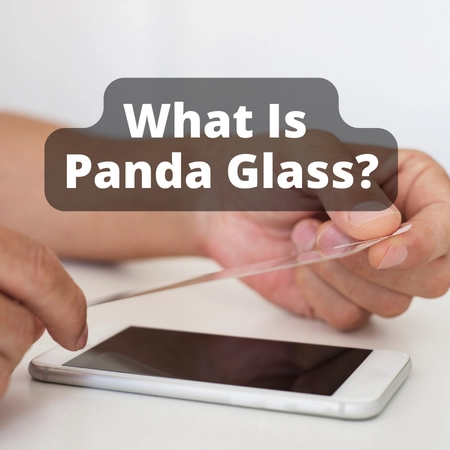
When looking for a new phone case, you may have encountered the term “panda glass.” A variety of phone cases on the market use this type of glass. But what … Keep Reading

4 thoughts on “10 Reasons Why Phone Screens Are Made Of Glass”
Comments are closed.